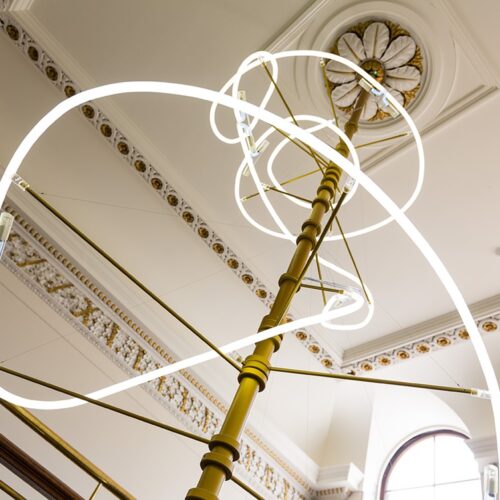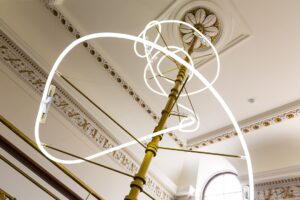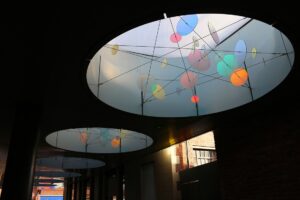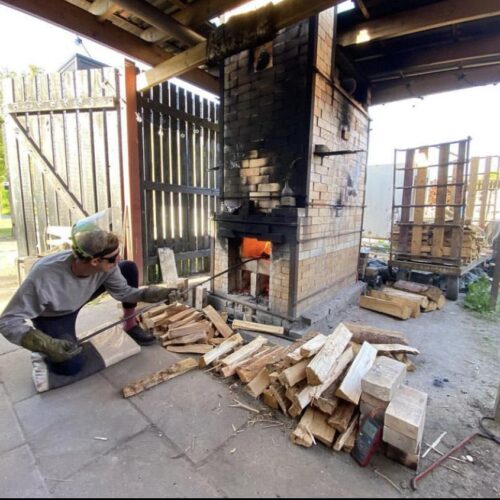
The Art of Invitation – Part 2
It is common for an artist to write a statement defining their practice. In my opinion this serves a greater purpose for the artist than for the audience (who, after all, should be free to respond emotionally to an experience rather than being instructed regarding its intention).
I have been writing and rewriting my statement for as long as I can remember and the version below is just the current version which will change and modify as my work evolves and as I reflect on what I am making. This text is a search for the underlying foundations which form the context and values of the work rather than the medium and process of making. My work is all site specific and so the latter can vary dramatically depending on the location. The statement also encompasses questions which I am asking and have yet to resolve. It is a work-in-progress as much as the art itself and must remain fluid in order not to become dictatorial or restrictive.
I share this here simply as an example of my thought process and working methods and not as a suggestion of how others should work or think. Individuality is the fastest route to originality and so the purpose of writing a statement of intent is, in part, to differentiate oneself from others.
‘Hierarchy’ 2018, an investigation of status

Neil Musson, Artists statement
My work is the investigation of pathways, migrations and unplanned encounters. It considers time and emotion in relation to place. It is a response to conversations, social structures and inhabited landscapes and becomes experimental interventions which affect the way people behave. Those who experience and reflect on my work become the ongoing and ever changing expression of that work – I greatly value the way in which the viewer reinterprets, and therefore reinvents, what I have made.
The artist has the intuition to feel the future and the viewer receives an offer to respond; thus art is ahead of its time, making abstract predictions and triggering possibilities. The artist has the privilege of working in spaces between cultural boundaries and can therefore offer a fresh perspective and imagine a new civilisation. My installations question definitions of community, belonging and engagement. They follow pathways, mapped lines and historic journeys, both literally and metaphorically.
I make art which intervenes in public spaces to alter the way people behave. I explore site specific installation as a means of presenting, sharing and challenging ideas as a catalyst for positive change. I aim for more poignant definitions of an art-‘work’ by contrasting the permanent physicality of manufactured art with ever evolving metaphysical memories of an experience.
What constitutes an art gallery when there are no walls and no invitations? My work is not usually gallery based and yet there is always a stage on which it is exhibited. How, where and when does artwork exist in an undefined, transient state acknowledged only by the spontaneous responses, and subsequent memories, of those who come into contact with it? Nothing is permanent. All is temporary. Thoughts and ideas modify and change with time. This is where my art is sited: in the collaborative process of changed thought and shared identity.
I am interested in the notion that art holds the power of ‘intermediate negotiation’ – existing in spaces between established opinions and cultural boundaries. In these spaces it becomes a unique form of negotiation where there is no agenda to sway opinion one way or another. Music and the visual arts cross boundaries otherwise blocked by political or social factors and I use this position to pose questions without being restricted by preconceptions or personal interests. The exploration of this hinterland requires open minded collaboration which often results in the manifestation of an action or a performance being more valuable than the physicality of something produced.
The fluid and unpredictable nature of my practice is largely the result of invitations; I create work in response to invitations and have no way of knowing where those invitations will come from. My investigation of the connectivity between time, emotion and landscape are constant while making styles and materiality change in response to the people I meet, the places I visit and the cultures I work in.
The form and behaviour of my site specific artworks all begin with questions related to the space: What size is the space? How does it feel / sound / move? What is its context? What is its history? What is its future? Who occupies the space? How does a person behave in the space? What are they thinking about and what would they like to be thinking about?…
…And so from invitations my practice grows. I am challenged to work within new parameters on a quest to establish and reveal art in unexpected moments. The audience becomes the substance of the work and the finished work remains an unfinished conversation.
Neil’s work can be seen at mussonretallick.com
Part 3 will cover my philosophy on the ‘five elements of creative practice’.
‘A Slice of Life’ 2018, mapping locations of personal significance

|
|







The perspective of unity and difference between your iterations of an artist statement would make your “autobiographical book of making” an historical document and yet also a springboard into a post covid world.
I loved reading the artist statement – It is super clear and inviting, unlike so many odd statements ‘out there’. It is such a relief to think that things become clearer retrospectively. And good to see the clarity that comes with a long and sustained practice. Thanks for sharing this with us.